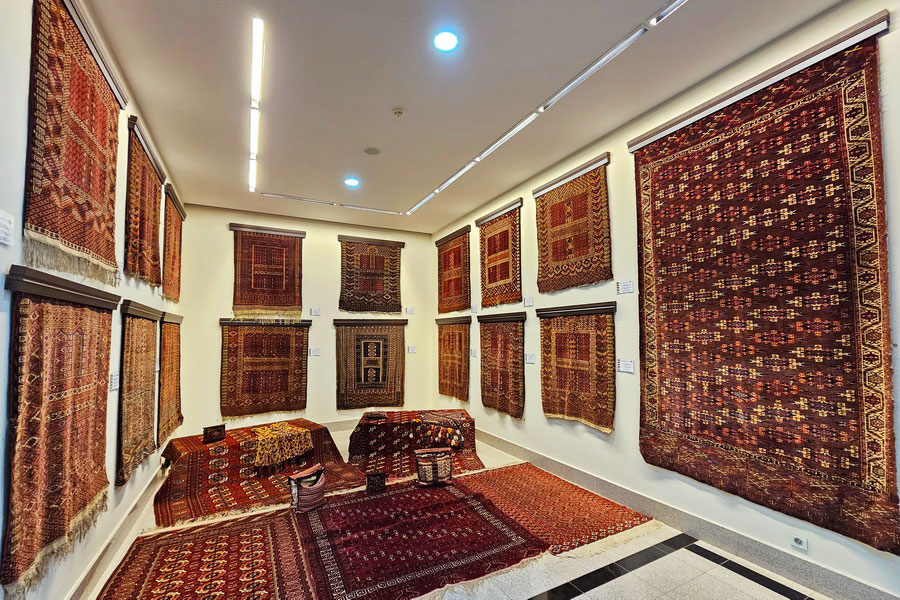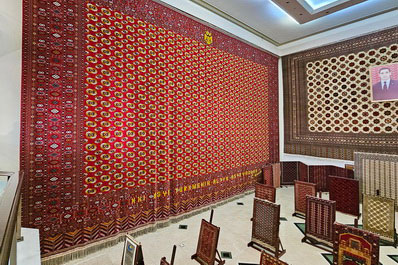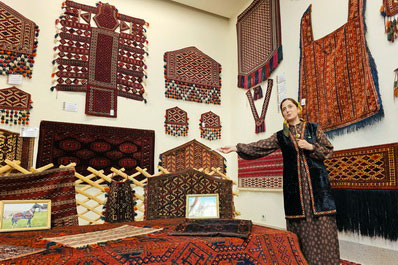National Turkmen Carpet Museum, Ashgabat

In Turkmenistan, carpets are a symbol of the state, a cornerstone of the Turkmen people's culture, and a repository of tribal identity that has been preserved for thousands of years. Turkmen carpets use natural dyes and yarns, adhere to special rules in their intricate patterns, and are always handmade with care. It’s no surprise that in 1993, the first president, Saparmurat Niyazov, initiated the opening of the National Carpet Museum in Ashgabat.
Located in the heart of Ashgabat, the National Turkmen Carpet Museum covers 15,000 square meters, with a third of that space dedicated to the permanent exhibition. The museum's collection features 2,000 exhibits from different eras, primarily from the 17th to 19th centuries. Notable items include the smallest carpet, shaped like a key box, and the largest carpet, which holds a Guinness World Record at 301 square meters.
Visitors to the museum can learn about the various types of carpets and their traditional uses, from prayers and celebrations to decorating yurts. The exhibits include looms and work tools, offering insight into the intricate and labor-intensive process of handmade carpet weaving.
A unique feature of Turkmen carpets is their ornamental symbols, known as “gyols”. The five most significant gyols, representing the five largest tribes of Turkmenistan, are even depicted on the country’s flag and coat of arms. Each gyol encodes special meanings, such as symbols of the Sun, Moon, stars, the wheel of fate, and flowers. Understanding the symbolism behind each gyol is an art in itself, and a museum guide can help unlock this ancient nomadic language.
The National Turkmen Carpet Museum in Ashgabat also boasts conference rooms, storage facilities, and a scientific department dedicated to studying and restoring ancient carpets. Additionally, there is a store with a wide selection of carpets, allowing visitors to take a piece of Turkmen culture home with them.


